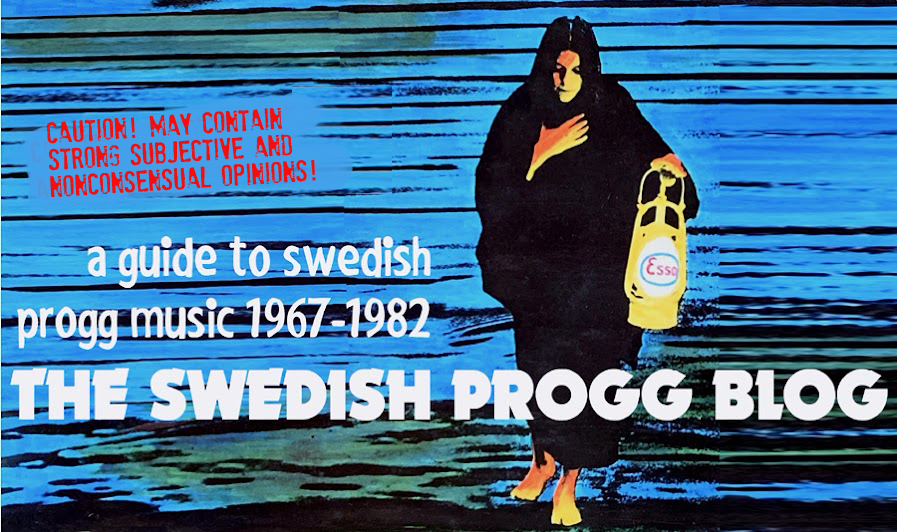English vocals
International relevance: None whatsoever, to anyone, anywhere
To the utter dread of some of my
dearest friends (my girlfriend in particular), I have a seriously
developed fascination, actually liking, for outsider music. You know,
those people with a strong urge to make music although they really
don't know how to do it. Music many people call just plain bad.
However, bad music to me is music that tries so hard to appeal
”everyone”. Music without a personality, music without an idea
and a true creative drive. Simply put, music without a reason. I'd
much rather listen to every Shaggs or every Kenneth Higney in the
world, than sit through 2 minutes of any Rihanna song of your choice.
I find these outsiders inspiring in all their whacked-out, no-clue
glory.
But I do have limits to this interest. They're far off, but they exist.
Malaria is way, way, WAY beyond
that limit.
Honestly, this isn't just the worst
progg album I've ever heard. It's the worst album I've ever
heard. Of all. And I have thousands and thousands of albums to choose
from. In so many genres. There is no worse album than this in the
entire world. I kid you not. I speak the truth.
So, I like people without a clue how to
make music. Malaria don't even have a clue what they don't have a
clue of. Pull a dictionary from your shelf. Look for every derogative
word in there. Put them together and you have a positive, overrating
description of this album.
I've listened to this album several
times, just to figure out what the hell is going on here. But it's
impossible; you can't figure it out and neither can Malaria. But
here's what I think is the deal: They're trying to make a psychedelic
folk album. Well, they did at least end up with an album... released
in 20 copies back in 1970. I'd be surprised if they managed to unload
the entire edition. If they did, only their sorry friends must have
bought it. If so, Malaria likely lost the very same friends within an
hour. And their parents.
The friends probably lost their parents
too.
The folk medley on side 2 is, er,
”interesting”. It's so completely lost at sea with no boat in
sight on the entire Northern hemisphere. Or the Southern hemisphere
either. Picture a family of drunken monkeys trying to figure out
whether this flute is supposed to be in your mouth or in your ass, or
if you can eat this drum, and you come close to what it sounds like.
Compared to that, the ”Scarborough Fair” cover that follows it is
almost enjoyable...
The ”favourite” track on the album
is possibly ”Hold On, Abraham” though. It has a bass solo. Or
something you might want to describe as a bass solo if you're in a
good mood and the sun is shining and you slept well for a good long
night. I once sent a Malaria CD-R to a friend of mine, with the
appropriate warning and a malicious cheer to go along with it. He
replied to me, ”I went on a Mallorca holiday for a week, and upon
my return, the bass solo was still playing...” And remember, when
the bass solo ends, it's followed by a guitar solo...
To say that the three Malaria guys,
whose names shall be kept in secret out of care of their possible
children, don't know how to play is to give unnecessary credit to
their... musicianship. It's as if they've never seen a musical
instrument ever before in their entire lives. ”Look! Is this what
they call a guitar? Oh, this hole here, I think you're supposed to
shout into it! Golly gee, I'm a guitarist now! Girls like guitarists!
Cool!”
There was a vinyl reissue of this album
in the 90's. I think it was in an edition of 200 copies. I used to
have one of those. I bought it second hand in the shop where I first
heard it. I needed to have it as a reminder of the first experience.
It made me laugh so hard I accidentally turned another customer over;
he was squatting on his haunches and
I was laughing so hysterically I wasn't aware of him. I just couldn't stop laughing.
The knocked over guy didn't return to
the shop for several months.
Later I sold my copy. I explained to
the guy behind the counter just how bad the album was. He doubled the
price I asked for it. ”If it's that bad,” he said, ”someone
will buy it before the end of the week.” He was right. That's record
collecting for you, folks!
There was also a massively rare 10 copies edition of the reissue with the cover and the inner sleeve screenprinted by Jon McCafferty who did the cover of "Green" for R.E.M.
If I am to say something good about
this album, how impossible it may seem, then I guess it has to be
that it reputedly inspired The Underground Failure to record and release
their album soon after. If it isn't true, then there's
nothing good to say about Malaria.
The Tibet -46 label later evolved into
Musiklaget who released a handful of albums in the 70's.













